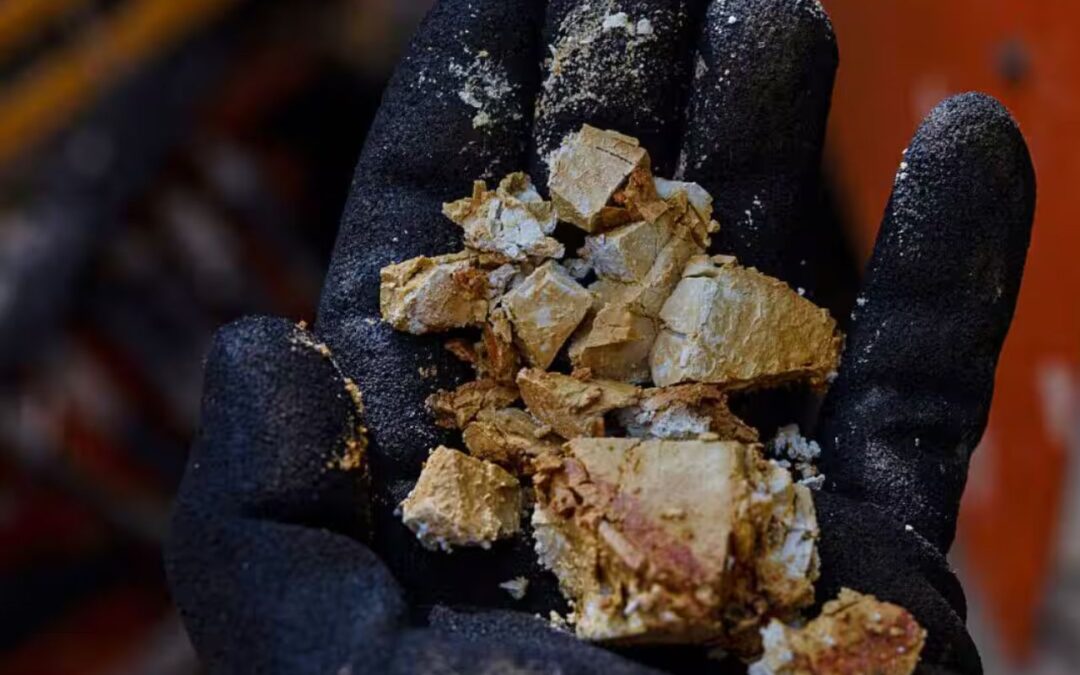Synopsis: With China controlling most of the world’s rare earth supply, global power dynamics are shifting. Are these critical minerals the new oil driving the twenty-first-century energy race?
As the global economy races toward decarbonization, a new kind of natural resource has taken center stage, rare earth materials. Once an obscure category in the periodic table, these minerals have become as strategically vital to clean energy as crude oil was to the industrial age.
From powering electric vehicles and wind turbines to enabling the production of smartphones and defense systems, rare earths now underpin both energy security and technological progress.
The clean energy transition is shifting dependency from oil rigs to mineral mines. According to the International Energy Agency (IEA), demand for rare earth elements (REEs) could surge by as much as 700 percent by 2040, driven by the rapid adoption of electric vehicles, renewable power, and digital infrastructure.
Yet, much like oil in the twentieth century, their availability is concentrated in just a few regions, raising concerns over supply security and geopolitical leverage. Notably, the share of clean energy in total rare earth demand is also expected to rise from 13 percent in 2010 to 41 percent in 2040.
This article is based on insights and data from Deloitte’s report titled “Rare Earth Minerals and Their Role in the Energy Transition” (2025).
What Makes Rare Earths So Critical?
Rare earth minerals comprise 17 chemically similar elements, divided into light and heavy categories. They are prized for their magnetic, luminescent, and electrochemical properties, characteristics that make them indispensable to modern technologies. Magnets made from neodymium, praseodymium, and dysprosium are central to EV motors and wind turbines.
However, despite their name, these materials are not geologically rare, they are simply difficult and costly to extract in concentrated, usable form. Their complex refining process involves multiple separation and purification stages, often causing significant environmental damage if not properly managed.
The New Geopolitics of Minerals
In today’s world, China occupies the role that Saudi Arabia once held in oil, the global price-setter and gatekeeper. It controls about 60 percent of global rare earth production and nearly 90 percent of the processing capacity, according to the U.S. Geological Survey.
The Bayan Obo mine in Inner Mongolia alone accounts for a major share of global output. Other countries such as the U.S., Australia, and Myanmar have active mining operations, but they remain heavily dependent on China for refining and downstream processing.
This imbalance has geopolitical implications. The European Union, which leads in wind turbine and EV manufacturing, has negligible rare earth mining capacity. The U.S., despite reopening its Mountain Pass mine in California, still sends most of its extracted material to China for processing. Such dependency raises the risk of supply disruptions, a scenario reminiscent of oil shocks.
Demand Explosion in the Energy Transition
Rare earths sit at the heart of clean technologies. Electric vehicles require six times more mineral input than traditional combustion-engine cars, while a single onshore wind turbine consumes nine times more minerals than a gas-fired plant.
Under the IEA’s Sustainable Development Scenario, demand from EVs is projected to grow 15-fold by 2040, while wind energy demand will triple.
China’s leadership in clean energy adoption intensifies the trend. In 2023, the country accounted for 60 percent of global EV sales and achieved its wind and solar capacity targets six years ahead of schedule. However, these advancements also deepen the world’s reliance on Chinese rare earths, mirroring how oil once tied global economies to Middle Eastern producers.
The Supply Challenge
The path to securing rare earth supply is complex. Mining projects typically take over a decade to develop, and resource quality varies widely. As ores become lower grade, extraction becomes more energy-intensive and costly. Moreover, environmental concerns loom large, as one ton of rare earth material can generate nearly 2,000 tons of toxic waste, including radioactive residue.
Recognizing these risks, automakers such as Tesla and Renault are exploring technologies that reduce or eliminate rare earth dependence. Externally excited synchronous motors (EESMs), which create magnetic fields through electric current rather than permanent magnets, are one promising alternative. Yet, such innovations are still developing and cannot fully offset global demand in the near term.
The Middle East’s Next Pivot
Countries that once dominated fossil fuel markets are now exploring rare earths as the “new oil.” Saudi Arabia’s Arabian Shield holds significant reserves of tantalum and niobium, both critical for batteries and aerospace applications. Under its Vision 2030 program, Saudi Arabia aims to triple the mining sector’s contribution to GDP and has partnered with Japan to develop rare earth supply chains. However, water scarcity and environmental risks could make extraction in desert regions particularly challenging.
From Black Gold to Rare Earth
The comparison between rare earths and oil is a fitting one; both have fueled industrial revolutions, shaped global power dynamics, and influenced the course of international trade. Yet, unlike oil, rare earths aren’t a single resource.
They form a complex web of materials that lie at the heart of the clean energy transition. As the world races toward a low-carbon future, much will depend on how responsibly and fairly these critical minerals are extracted, refined, and shared.
-Manan Gangwar
Disclaimer

The views and investment tips expressed by investment experts/broking houses/rating agencies on tradebrains.in are their own, and not that of the website or its management. Investing in equities poses a risk of financial losses. Investors must therefore exercise due caution while investing or trading in stocks. Trade Brains Technologies Private Limited or the author are not liable for any losses caused as a result of the decision based on this article. Please consult your investment advisor before investing.





